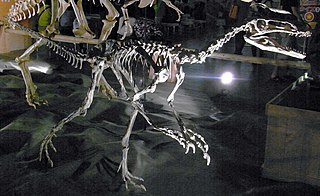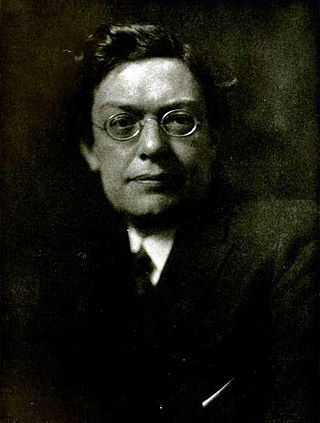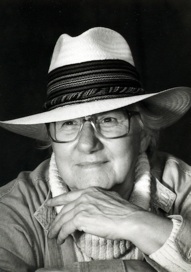
Gregory Scott Paul is an American freelance researcher, author and illustrator who works in paleontology. He is best known for his work and research on theropod dinosaurs and his detailed illustrations, both live and skeletal. Professionally investigating and restoring dinosaurs for three decades, Paul received an on-screen credit as dinosaur specialist on Jurassic Park and Discovery Channel's When Dinosaurs Roamed America and Dinosaur Planet. He is the author and illustrator of Predatory Dinosaurs of the World (1988), The Complete Illustrated Guide to Dinosaur Skeletons (1996), Dinosaurs of the Air (2001), The Princeton Field Guide to Dinosaurs (2010), Gregory S. Paul's Dinosaur Coffee Table Book (2010), The Princeton Field Guide to Dinosaurs: 2nd Edition (2016), The Princeton Field Guide to Pterosaurs (2022), The Princeton Field Guide to Mesozoic Sea Reptiles (2022) and editor of The Scientific American Book of Dinosaurs (2000).

The Houston Museum of Natural Science is a natural history museum located on the northern border of Hermann Park in Houston, Texas, United States. The museum was established in 1909 by the Houston Museum and Scientific Society, an organization whose goals were to provide a free institution for the people of Houston focusing on education and science. The museum complex consists of a central facility with four floors of natural science halls and exhibits, the Burke Baker Planetarium, the Cockrell Butterfly Center, and the Wortham Giant Screen Theatre. In 2022, the museum received 1,520,000 visitors, making it seventh on the List of most-visited museums in the United States, and was the third most-visited U.S. science museum. Much of the museum's popularity is attributed to its large number of special or guest exhibits.

Guanlong (冠龍) is a genus of extinct proceratosaurid tyrannosauroid dinosaur from the Late Jurassic of China. The taxon was first described in 2006 by Xu Xing et al., who found it to represent a new taxon related to Tyrannosaurus. The name is derived from Chinese, translating as "crown dragon". Two individuals are currently known, a partially complete adult and a nearly complete juvenile. These specimens come from the Oxfordian stage of the Chinese Shishugou Formation.

Charles Robert Knight was an American wildlife and paleoartist best known for his detailed paintings of dinosaurs and other prehistoric animals. His works have been reproduced in many books and are currently on display at several major museums in the United States. One of his most famous works is a mural of Tyrannosaurus and Triceratops, which helped establish the two dinosaurs as "mortal enemies" in popular culture. Working at a time when many fossil discoveries were fragmentary and dinosaur anatomy was not well understood, many of his illustrations have later been shown to be incorrect representations. Nevertheless, he has been hailed as "one of the great popularizers of the prehistoric past".

Gammaproteobacteria is a class of bacteria in the phylum Pseudomonadota. It contains about 250 genera, which makes it the most genus-rich taxon of the Prokaryotes. Several medically, ecologically, and scientifically important groups of bacteria belong to this class. All members of this class are Gram-negative. It is the most phylogenetically and physiologically diverse class of the Pseudomonadota.

Albertaceratops was a genus of centrosaurine horned dinosaur from the middle Campanian-age Upper Cretaceous Oldman Formation of Alberta, Canada.
Darren H. Tanke is a Canadian fossil preparation technician of the Dinosaur Research Program at the Royal Tyrrell Museum of Palaeontology in Drumheller, Alberta. Born in Calgary, Tanke became interested in natural history at an early age. In 1979, Tanke began working for Philip J. Currie in the paleontology department of the Provincial Museum of Alberta, originally as a volunteer. From 1979 until 2005 Tanke worked as a lab and field technician, a job he still holds today.

Paleoart is any original artistic work that attempts to depict prehistoric life according to scientific evidence. Works of paleoart may be representations of fossil remains or imagined depictions of the living creatures and their ecosystems. While paleoart is typically defined as being scientifically informed, it is often the basis of depictions of prehistoric animals in popular culture, which in turn influences public perception of and fuels interest in these animals. The word paleoart is also used in an informal sense, as a name for prehistoric art, most often cave paintings.
John J. Lanzendorf was an American hairstylist who amassed one of the world's largest collections of dinosaur-themed artwork. The collection is now owned by the Children's Museum of Indianapolis.

Mauricio Antón Ortuzar is a paleoartist and illustrator specializing in the scientific reconstruction of extinct life, well known for his influential paintings of hominids, extinct carnivores and other vertebrate fossil groups. His works illustrate a great number of books, scientific papers, private collections and museums in many parts of the world. He currently works in association with the Natural Science Museum in Madrid.
Aerobic anoxygenic phototrophic bacteria (AAPBs) are Alphaproteobacteria and Gammaproteobacteria that are obligate aerobes that capture energy from light by anoxygenic photosynthesis. Anoxygenic photosynthesis is the phototrophic process where light energy is captured and stored as ATP. The production of oxygen is non-existent and, therefore, water is not used as an electron donor. They are widely distributed marine bacteria that may constitute over 10% of the open ocean microbial community. They can be particularly abundant in oligotrophic conditions where they were found to be 24% of the community. Aerobic anoxygenic phototrophic bacteria are photoheterotrophic (phototroph) microbes that exist in a variety of aquatic environments. Most are obligately aerobic, meaning they require oxygen to grow. One aspect of these bacteria is that they, unlike other similar bacteria, are unable to utilize BChl (bacteriochlorophyll) for anaerobic growth. The only photosynthetic pigment that exists in AAPB is BChl-a. Anaerobic phototrophic bacteria, on the contrary, can contain numerous species of photosynthetic pigments like bacteriochlorophyll-a. These bacteria can be isolated using carotenoid presence and medias containing organic compounds. Predation, as well as the availability of phosphorus and light, have been shown to be important factors that influence AAPB growth in their natural environments. AAPBs are thought to play an important role in carbon cycling by relying on organic matter substrates and acting as sinks for dissolved organic carbon. There is still a knowledge gap in research areas regarding the abundance and genetic diversity of AAPB, as well as the environmental variables that regulate these two properties.
Eugene S. Gaffney is an American paleontologist and leading authority on the morphology and evolutionary history of turtles.
Brian Cooley is a Canadian sculptor, specializing in dinosaurs.
Raúl Martín is a Spanish illustrator specializing in paleoart, the branch of science illustration that deals with artworks of subjects of paleontology. He is best known for his dinosaur paintings which appear in museums all over the world including the American Museum of Natural History, the Maryland Science Center, and Fort Peck Paleontology Inc. His works also notably appear in popular magazines including Scientific American, Science, and the International Edition of National Geographic. As of 2001, he works with the paleontology department at the Universidad Autónoma of Madrid, Spain, where he currently lives, as well as with the paleoanthropological team of the Atapuerca Mountains excavations.
Mark Hallett is an American artist best known for his illustrations of dinosaurs and other prehistoric animals. Having originally coined the term "paleoart" to refer to science-based paleontological illustration, Hallett remains one of the most influential masters of modern dinosaur imagery. He currently lives in Dallas, Oregon.

Eleanor Kish, also known as Ely Kish, was an American-Canadian artist, best known for her paleoart depicting dinosaurs and other prehistoric life.
Danielle Dufault is a Canadian paleoartist and biological illustrator based in Toronto, Ontario.
Michael W. Skrepnick is a Canadian palaeoartist best known for his illustrations of prehistoric animals. He has produced illustrations featured in natural history museums, scientific journals, books and magazines. He lives and works in Alberta, Canada. Skrepnick is noted for his acrylic paintings of dinosaurs, such as his rendition of the 2016 discovery of the ceratopsian dinosaur Spiclypeus shipporum.










